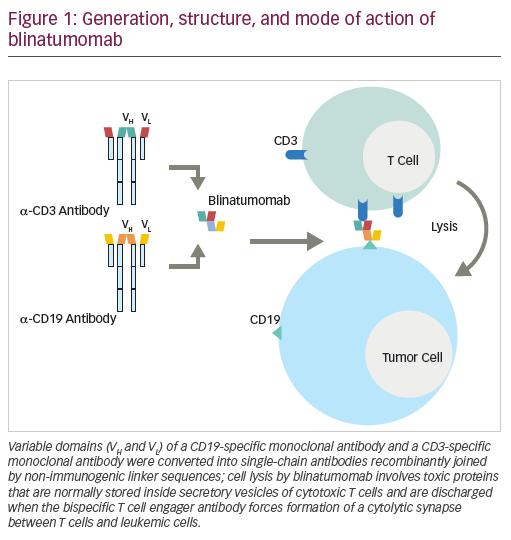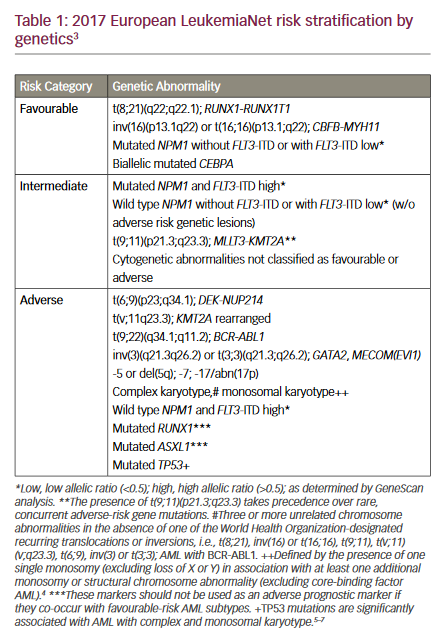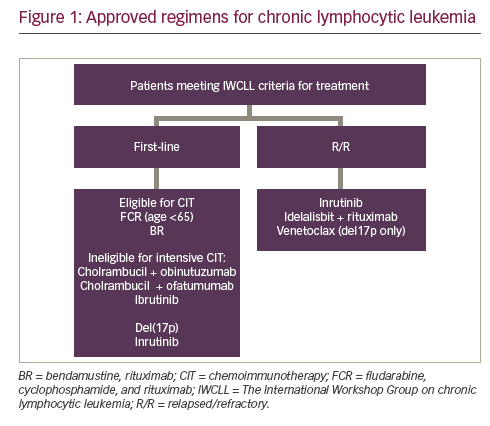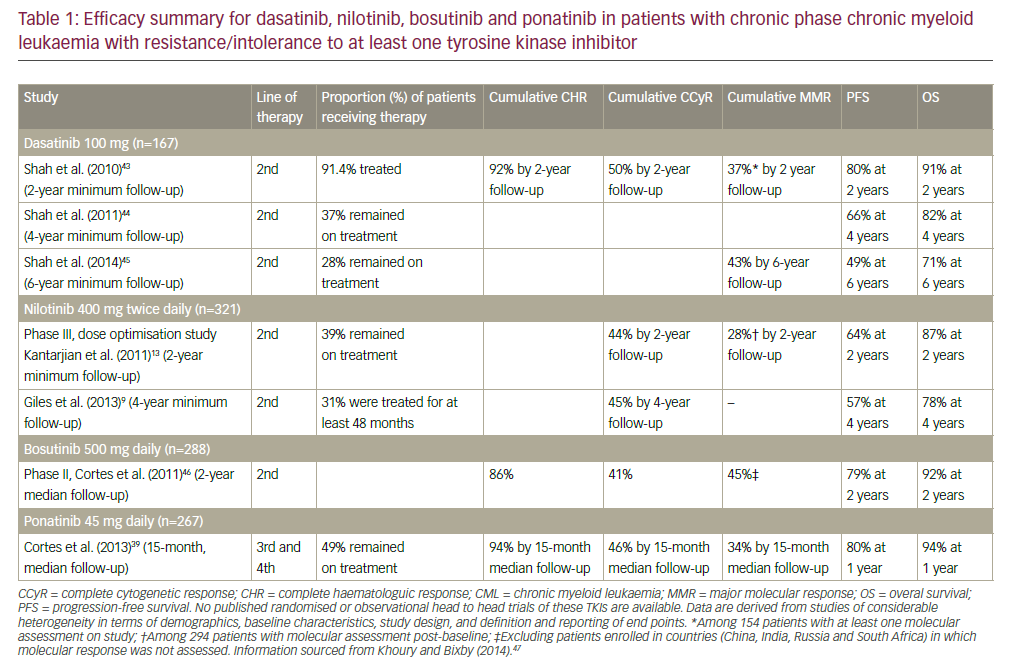Imatinib is a 2-phenylaminopyrimidine derivative that selectively inhibits BCR-ABL, a constitutively active tyrosine kinase arising from the Philadelphia chromosome translocation that occurs in nearly all patients with CML.1,2 Imatinib is the current standard of care in patients with CML, inducing durable responses and prolonging event-free and progression-free survival.3,4 Imatinib has a favourable pharmacokinetic profile, with rapid oral absorption that is not significantly affected by food and has near-complete bioavailability and a terminal elimination half-life (~18 hours) compatible with once-daily dosing.5,6
While intra-patient variability in trough imatinib plasma levels is low,7 inter-patient variability can be sizeable.5,8,9 For example, in a French study by Picard et al.,9 trough plasma concentrations ranged from 181 to 2,947ng/ml among 68 patients with CML receiving imatinib 400mg or 600mg/day. The underlying causes of this variability in trough plasma imatinib concentrations are not fully understood, but may include variable adherence to imatinib therapy, patient demographic factors, inter-patient variability in the activity of metabolising enzymes such as cytochrome P450 3A4 (CYP3A4), drug–drug interactions and differences in plasma protein binding of imatinib.6,10–14
Variability in the activity of cellular uptake and efflux transporters, such as human organic cation transporter 1 (hOCT1), has also been linked with response to imatinib.15–18 However, while this variability will affect intracellular imatinib concentrations, it will not significantly influence plasma levels.
The large variability in trough plasma concentrations observed among imatinib-treated patients with CML suggests that low plasma concentrations could explain some cases of suboptimal response or treatment failure. The study by Picard et al.9 showed a significant correlation between imatinib plasma levels and both complete cytogenetic response (CCR) and major molecular response (MMR) in 68 CML patients treated with 400 or 600mg/day of imatinib for a minimum of 12 months (mean trough imatinib concentrations 1,123±617ng versus 694±556ng/ml for CCR versus no CCR [p=0.03] and 1,452±649 versus 869±428ng/ml for MMR versus no MMR [p<0.0001]).9
Larson et al.8 also reported a correlation between imatinib trough plasma concentration and clinical response among 351 patients with CML treated with imatinib 400mg/day in the International Randomized Study of Interferon and STI571 (IRIS) trial. After stratifying the incidence of CCR and MMR during a five-year follow-up period by distribution quartiles of imatinib trough plasma concentration at day 29 of treatment, they found that there was a significantly higher rate of CCR (p=0.005) and MMR (p=0.008) in patients stratified to the higher three quartiles (plasma imatinib concentration ≥647ng/ml on day 29) compared with patients stratified to the lowest quartile (plasma imatinib concentration <647ng/ml).8
One-year data from the phase III Tyrosine Kinase Inhibitor Optimization and Selectivity study (TOPS), involving 476 newly diagnosed CML patients randomised 2:1 to receive 800 or 400mg/day, also suggest a correlation between imatinib trough plasma concentrations and clinical response.19 In addition, several other groups from Europe and elsewhere are currently evaluating the clinical relevance of BLT, and supportive data from Poland and the Czech Republic have been presented at recent congresses.20,21
Only one report has so far failed to observe a correlation between imatinib plasma concentration and response, based on a study of 78 CML patients treated with imatinib over an eight-year period.22 However, concerns regarding potential bias in the analysed patient population have been raised in response to this publication.23 The authors of the report also noted that the study may have been limited by small patient numbers and heterogeneous sampling times.22 It is, of course, less likely that a correlation between imatinib plasma concentrations and response will be observed in normal clinical practice (with patients receiving different imatinib doses and administration schedules) than in a clinical trial setting. Further studies will be required to determine the applicability of imatinib plasma levels with different schedules of administration.
However, we believe that there is now a significant evidence base emerging to support a link between imatinib plasma levels and clinical response. The monitoring of imatinib trough plasma levels via BLT therefore has great potential as a tool for the optimisation of imatinib dose.
At a meeting in Bordeaux on 17–18 November 2008, approximately 50 experts in BLT from around Europe – including both clinicians and pharmacologists – met to discuss a variety of topics, including BLT methodology, the application of BLT in clinical practice and the key work that still needs to be done. This review will reference the discussions from this meeting and report the conclusions reached.
Imatinib Blood Level Testing in Europe
The Bordeaux meeting was held under the auspices of the EUTOS for CML (www.eutos.org), a unique collaboration between Novartis Pharma and the European LeukemiaNet (ELN). EUTOS for CML was initiated in 2007 with the aim of optimising the management of CML across Europe. One of the key activities within this programme is expanding the availability of imatinib plasma-level monitoring to a European level. It is a project led by Professor Francois-Xavier Mahon from the University of Bordeaux, France, Professor Francois Guilhot from the University Hospital in Poitiers, France and Dr Peter Schuld from Novartis Pharma. Expert technical input is provided by Professor Mathieu Molimard from the University of Bordeaux, France.
Expansion of the availability of imatinib BLT is being achieved both by providing a Europe-wide monitoring service free of charge at a central facility in the Department of Clinical Pharmacology and Toxicology at the University of Bordeaux in France, and by establishing dosing services at laboratories in selected sites across Europe. The methods used at these other laboratories will be validated against the standard method used at the central facility in Bordeaux.24
The central facility uses a sensitive and specific liquid chromatography–mass spectrometry/mass spectrometry method (high-performance liquid chromatography [HPLC] coupled with tandem mass spectrometry). Other methods can also be used, for example based on HPLC–UV-DAD (HPLC coupled with ultraviolet-diode array detection). The validation process involves sending 12 spiked and three pooled reference samples from the Bordeaux centre for evaluation at the other sites to confirm equivalence between reported and actual concentrations at each site. Ideally, all of the 15 values measured at each site should be within 20% of the reference values measured at the Bordeaux laboratory. Regular rounds of quality control will also be performed.
A total of 28 national BLT laboratories have participated in the validation so far (September 2009). These will provide reliable and comparable results that can be used to guide treatment optimisation for individual patients and build a database to direct further research on the use of BLT in clinical practice.
To assist physicians wishing to submit plasma samples for BLT, a sampling kit has been produced containing sample tubes, envelopes, labels, etc. More than 3,000 of these kits have already been distributed.
As of June 2009, >4,000 plasma samples have been analysed at participating centres. Almost half of these analyses were performed at national laboratories, with the remainder carried out at the central facility in Bordeaux. National laboratories in Austria (~230 samples), Germany (~460 samples), Italy (~180 samples), Switzerland (~220 samples) and the UK (~400 samples) have been particularly active. The central facility in Bordeaux has received samples from physicians in 22 European countries, including >1,600 samples from France, as well as large numbers from Belgium (~90 samples), Poland (~510 samples), Slovenia (~80 samples), Spain (~100 samples) and the UK (~100 samples).
Blood Level Testing in Current Clinical Practice
There are several scenarios in which imatinib BLT could be valuable in guiding clinical practice. These are reviewed in detail elsewhere,25 but include the following:
• patient not responding to imatinib as well as expected;
• patient thought not to be adhering to the imatinib regimen;
• patient thought to be experiencing a drug–drug interaction; and
• patient experiencing side effects that are unusually severe for the prescribed dosage.
These scenarios are the most commonly observed reasons for physicians to request BLT in clinical practice. Physicians sending samples to the EUTOS for CML central facility in Bordeaux are asked to give their reason(s) for requesting BLT. Based on 1,390 samples received, for which reasons were given (up to December 2008), these were:
• not responding as well as expected: 55%;
• adherence concerns: 18%;
• suspicion of a drug–drug interaction: 11%; and
• unusually severe side effects: 28% (F-X Mahon, M Molimard, unpublished data, 2008).
Key Questions Regarding Imatinib Blood Level Testing
Although trough imatinib plasma levels have been strongly linked with clinical response,8,9,19 there are still a number of important questions with regard to the application of imatinib BLT in clinical practice. These questions were discussed during the Bordeaux expert meeting and the opinions expressed are summarised below.
Should Blood Level Testing Be Part of Routine Clinical Practice for All Chronic Myeloid Leukaemia Patients?
The results from the IRIS and TOPS trials showed that low trough plasma imatinib concentration on day 29 from the start of therapy is associated with inferior clinical response.8,19 A similar correlation between plasma imatinib concentration at day 29 and long-term response has also been observed in imatinib-treated patients with gastrointestinal stromal tumours (GIST).26
Based on these data, it would seem appropriate to perform BLT on day 29 of treatment. As steady-state plasma concentrations are achieved within five to seven days after the initiation of imatinib therapy,5 it is likely that a trough plasma measurement performed at any point between day seven and day 29 would be equally valuable. No dose change is advocated for patients with particularly low (or high) trough imatinib plasma concentrations at such an early stage of treatment. However, an early test can provide valuable information on whether a patient is likely to achieve a poor response, which might therefore prompt a more rapid treatment adjustment should the patient ultimately respond more slowly than expected. This type of early monitoring approach is often used in other disease areas, for example with prophylactic treatments such as immunosuppressants (used to prevent graft rejection) and antiepileptics.
In addition to its prognostic significance, an early examination of imatinib blood levels provides a baseline imatinib trough plasma concentration against which to benchmark future measurements. An analysis of pharmacy records for 4,043 patients prescribed imatinib suggested that adherence to therapy is high for the first four months of treatment but then begins to decline.27 Hence, an early measurement of imatinib blood concentration, when adherence is likely to be good, could provide a valuable comparator if a physician later suspects adherence problems.
There is currently no consensus on whether BLT should be routinely performed at other time-points during imatinib treatment. Recommendations from the ELN advocate regular monitoring of treatment response, every three months.3 Given the relative simplicity of performing BLT, it would not be unreasonable to consider measuring trough imatinib concentration at any or all of these patient visits. Even in patients responding satisfactorily to imatinib treatment, measurement of trough plasma concentrations could provide valuable information, for example regarding adherence to treatment. However, as long as a patient maintains a good response to treatment, imatinib BLT is likely to be of more scientific than practical significance.
Can a Threshold for Optimal Response to Imatinib Be Defined?
The prospect of a threshold trough imatinib plasma concentration for optimal response was first raised by Picard et al.9 when they reported that plasma imatinib concentrations >1,002ng/ml were significantly associated with the achievement of MMR. Larson et al.8 then reported that the mean trough plasma imatinib concentration on day 29 in patients who achieved a CCR was 1,009ng/ml. Based on these data, it was suggested that plasma trough concentrations at or above ~1,000ng/ml could be important for achieving improved rates of CCR and MMR.8
Data from patients with two or more imatinib plasma-level measurements performed at the central BLT facility in Bordeaux have added further support to this potential threshold.28 Among 32 patients with no CCR and an imatinib trough plasma level <1,000ng/ml on first determination, none of those patients whose trough plasma concentration remained <1,000ng/ml subsequently achieved a CCR, whereas 28% of those whose trough plasma level rose to >1,000ng/ml did achieve a CCR. Furthermore, in patients with imatinib trough levels initially <1,000ng/ml, those whose trough plasma concentrations subsequently increased to levels >1,000ng/ml were significantly more likely to achieve a complete molecular response (CMR) than those whose plasma concentrations remained <1,000ng/ml.28 These data suggest that in patients with an increase in trough plasma imatinib levels (e.g. following a dose escalation), there may be a higher chance of achieving a response.
Despite these promising findings, further work is required to validate the trough plasma concentration of 1,000ng/ml as a threshold for clinical response. A prospective clinical trial examining outcomes among patients managed so that trough imatinib plasma levels are >1,000ng/ml would be extremely valuable. An alternative possibility for examining the putative threshold would be to expand the Bordeaux database across a large European CML population and/or to perform a meta-analysis of data gathered across European scientific groups. Such efforts have been initiated.
There still remains the intriguing possibility that there might be different imatinib trough plasma thresholds for different levels of response, such as CCR, MMR and CMR. In the study by Picard et al.9 of 68 patients with CML, the mean plasma concentration among patients achieving CCR (1,123±617ng/ml; n=56) was lower than that among patients achieving MMR (1,452±649ng/ml; n=34). A recent Polish study of 41 patients with CML produced similar findings: mean trough imatinib concentration was lower in patients achieving CCR (731ng/ml) than in patients achieving MMR (1,305ng/ml).21 It is therefore possible that higher imatinib plasma concentrations may be desirable for the achievement `of progressively deeper levels of response (CCR–MMR–CMR). However, as yet no specific thresholds for particular levels of response have been proposed.
What Is the Relationship Between Imatinib Levels and Adverse Events?
Although there is evidence of a link between imatinib plasma concentration and adverse events (AEs),29 the characteristics of any such correlation are largely unknown. An analysis of data from the IRIS trial showed no major differences between the types and grades of AEs reported in patients in each of the trough plasma imatinib concentration quartiles. The exceptions were fluid retention, rash, myalgia and anaemia, which were more common among patients with higher imatinib trough levels, and fatigue, abdominal pain and neutropenia, which occurred less frequently among patients in the highest trough plasma category.8
It remains possible that there could be a trough plasma threshold for the emergence of certain AEs; the emergence of some other AEs may be more dependent on disease stage or imatinib peak (rather than trough) concentrations. The majority of AEs occurring during imatinib treatment are mild to moderate in nature, but additional studies will be necessary to define the relationship between AEs and imatinib levels.
In patients experiencing unusually severe side effects who show a high trough imatinib plasma concentration, treatment options may include decrease in dosage, splitting of posology to twice-daily dosing (to reduce imatinib peak concentrations), treatment interruption or therapy switch. Any treatment decision must be based on an assessment of the overall clinical situation in that patient and not blood levels alone.
What Could We Learn from Intracellular Imatinib Levels?
Imatinib has an intracellular mechanism of action and hence intracellular concentrations of imatinib might be more clinically relevant than trough plasma levels. However, the measurement of imatinib within cells is currently too complex for normal clinical practice, and is likely to remain so for the foreseeable future.
Intracellular imatinib quantitation has been successfully used for laboratory-based examination of imatinib transport across the cell membrane, but a correlation between intracellular imatinib concentrations and clinical response has yet to be determined. Studies on this putative association would be extremely valuable in providing further information on the dynamics of imatinib treatment. Questions remain regarding the cell population to investigate for such studies; CD34+ cells in bone marrow would be ideal, but these are not straightforward to work with.
Can We Define an Algorithm for Treatment Decision-making Based on Imatinib Blood Level Testing?
The currently available clinical data are insufficient to define and validate a comprehensive algorithm for treatment decision-making based on imatinib BLT. However, the authors propose the algorithm given in Figure 1, initially developed by Kajetana Foryciarz and colleagues in Poland as a working model that could be validated by further studies. In this algorithm, patients are first divided according to ‘low’ versus ‘high’ imatinib trough plasma concentration. Based on current data, it is not possible to define specific trough levels that define low and high imatinib concentrations, although the 1,000ng/ml threshold proposed previously8,9 might be an appropriate cut-off for initial testing of the model.
For patients with low imatinib trough plasma concentration but good clinical response (evaluated according to ELN criteria3), the authors propose that no specific action is necessary, other than continued monitoring of molecular response and further BLT if desired (see Figure 1A). However, if the patient has a low trough plasma concentration and a non-optimal clinical response (as defined by ELN criteria3), imatinib dose increase may be appropriate along with more frequent monitoring of molecular response (to examine the impact of dose escalation). Repeat imatinib BLT may also be appropriate after steady state is achieved at day seven (to examine whether imatinib trough plasma concentration increases). The potential for compliance problems or drug–drug interactions, either of which could lead to lower than expected imatinib plasma concentrations, should be examined before a dose escalation is considered.
For patients with high imatinib trough plasma concentrations, it is possible that AEs may become a more significant concern. There is currently little evidence that higher imatinib trough plasma levels correlate with an increased incidence of AEs, but there are data suggesting that some particular AEs may be linked to plasma levels.8 Any such link would be important from a clinical practice perspective, and given that low-grade AEs are quite common in imatinib-treated patients, the authors have included AEs in the proposed algorithm. In patients with high imatinib plasma levels, good response and no clinically significant AEs, the authors propose that no specific action is necessary, other than continued monitoring of molecular response and further BLT if desired (see Figure 1B).
In patients with high imatinib plasma levels and good response but also troublesome AEs, the authors propose that physicians should consider imatinib dose reduction, in addition to managing the symptoms of the AE(s). Switching to a second-generation tyrosine kinase inhibitor (TKI) could also be an appropriate response. In patients with high imatinib plasma levels and non-optimal response, the physician should consider the possibility that blood was not drawn from the patient a full 24 hours since his/her last imatinib dose (i.e. not at the true trough).
Upon confirmation that trough plasma concentration is high in a patient with non-optimal response, it may be appropriate to consider imatinib dose escalation or switching to a second-generation TKI. The presence of any AEs in such a patient might suggest treatment switch as the favoured option since even mild to moderate AEs occurring with standard-dose imatinib may be exacerbated with dose escalation.
The authors stress that the algorithm presented here is merely a working model and has not been validated. Furthermore, plasma concentrations should never be used in isolation, but instead should be interpreted in the context of all the clinical information available. Trough plasma levels may be used to support clinical decisions made based on the response status of the patients (e.g. cytogenetic and/or molecular response) and should not be used as a substitute for any of these parameters.
Other Questions
There are many other valid questions that we have not discussed in detail in this review. For example, is BLT also useful in patients with GIST who are treated with imatinib? Recent research on imatinib-treated patients with GIST has suggested a link between trough plasma imatinib levels and response,26,30 but, as with CML, a prospective trial would be very helpful for assessing the value of BLT in GIST patients.
A second important question revolves around the potential use of BLT for the second-generation TKIs, nilotinib and dasatinib, and the correlation between trough plasma concentrations and response in patients treated with these drugs. The short half-life of dasatinib (less than five hours) and the twice-daily dosing regimen of nilotinib make the measurement of trough plasma levels less relevant and there are currently no published data on the correlation between plasma levels and clinical response to either drug.
A third important question relates to the use of imatinib BLT in patients who are not receiving standard-dose imatinib (400mg) once daily. In patients receiving higher doses of imatinib (e.g. 600mg/day or 400mg twice daily), the plasma pharmacokinetic exposure to imatinib will inevitably be different compared with patients receiving imatinib 400mg once daily. Further studies are warranted in these patient groups.
Conclusions
Although current data are not sufficient to fully define its role, the monitoring of imatinib trough plasma level via BLT appears to have great potential as a tool for the optimisation of imatinib therapy in clinical practice. Discussions at a meeting of experts in imatinib BLT held in Bordeaux, France in November 2008 came to the following key conclusions:
• Based on data from the IRIS and TOPS trials,8,19 it may be appropriate to perform BLT routinely at a time-point between day seven and day 29 of treatment. Early measurement of imatinib plasma concentrations might be a valuable prognostic indicator for the likelihood of good response to treatment.
• It has been proposed that there might be an imatinib plasma threshold for optimal clinical response of ~1,000ng/ml.8,9 Further work will be required to validate this threshold. A prospective clinical trial would be valuable to examine the use of dose increases among CML patients with trough plasma concentrations below 1,000ng/ml.
• There is no clear correlation between AEs and imatinib plasma levels. AEs are mild to moderate in most cases and may be influenced by a number of factors, including disease stage of the patient.
• Although currently available clinical data are insufficient to define and validate a comprehensive algorithm for treatment decision-making, the authors propose a two-part working model in which treatment decisions are taken depending on clinical response and imatinib plasma concentration (see Figure 1).
The authors propose the following plan of action for continuing the validation and expansion of imatinib BLT across Europe:
• Continue methodological refinements: bring additional dosing centres into the EUTOS for CML project, repeat the validation steps to ensure data quality from all laboratories and standardise reporting to ensure aligned results.
• Establish a laboratory network: leverage the EUTOS for CML project to create a laboratory network that will promote imatinib trough BLT early in treatment (between days seven and 29) and preferably also at times of routine assessment of response.
• Pool data: perform a meta-analysis of data across the various European scientific groups, moving towards a joint European blood level evaluation.
• Analyse response thresholds: use the European databases to further examine the possibility of imatinib trough plasma level thresholds in a large CML population, particularly with respect to MMR (1,000ng/ml?) and CMR.
• Perform a prospective clinical trial: this trial should focus on the relationship between imatinib trough plasma concentrations and clinical response, and the effect on outcomes of dose adjustments in patients with low plasma imatinib levels.
If these goals can be realised with positive outcomes, imatinib BLT is likely to be established as a key tool in the management of CML. ■













